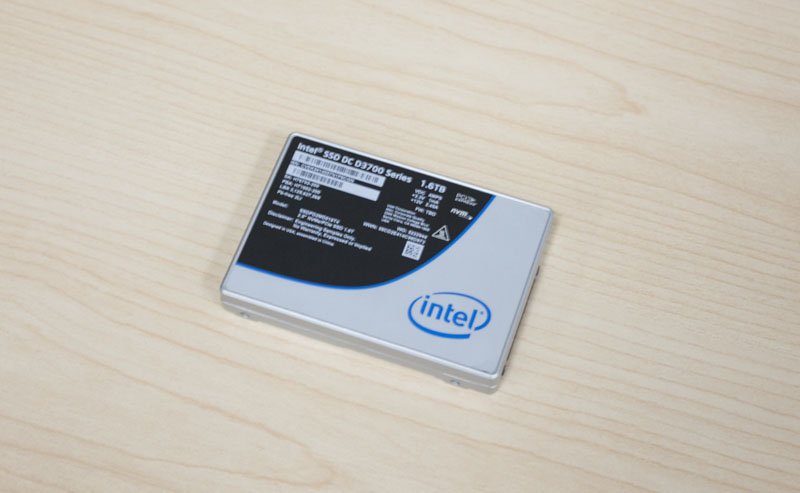At Intel Cloud Day 2016 in San Francisco, California, we saw the release of two new dual port NVMe SSDs, the Intel DC D3600 and DC D3700 series. These drives are a new segment for Intel as they are dual port designs that can be accessed by two systems simultaneously, a feature previously reserved for SAS drives. Until now, the fact that traditional storage scale up architectures have been based on dual port SAS drives for high availability (HA) controller pairs has meant that NVMe SSDs have been a poor fit. With these new SSDs, Intel has a drive solution for using HA controllers with single (or multiple) NVMe SSDs. We also found a few “gotchas” that Intel is less eager to bring forward.
Positioning the Intel DC D3700 and DC D3600
In the SSD world, manufacturers segment products based on speed, capacity, write endurance. Intel is adding a new segment above the P3700 and P3600 for these new D (for dual port) controller NVMe SSDs. The DC D3700 and DC D3600 are SSDs intended for high-end enterprise workloads and we would expect them to be priced as alternatives to SAS drives.

As one can see from Intel’s marketing slides, there is a clear purpose with these drives, start to displace SAS 2.0 and SAS 3.0 storage in HA controller architectures.

For those who are not familiar with traditional high availability arrays from SAS vendors, the basic idea is that one can have two different storage controllers access each of a drive’s ports. If one controller fails, the other controller can still access data on the device ensuring higher uptime. That is one of the biggest advantages SAS architectures have had over SATA and PCIe/ NVMe to date.

To make this possible, Intel needed to add a few new features to the drives compared with their single port brethren.

In terms of performance, the potential versus SAS2 or SAS3 drives is substantial, primarily when two storage controllers are connected. Capacities stay similar to what we have seen from P series drives.

Intel is using the fact that the NVMe stack is a much lower latency stack than SAS3 to show why OEMs and end customers should transition to NVMe.

The “gotchas” for these dual port NVMe drives
There are a few bits from the dual port NVMe drive launch that are “gotchas” and Intel is less than eager to advertise. The first, is that these are not plug and play compatible with existing NVMe backplanes. Simply put, existing backplanes tend to assume one 2.5″ device is wired to one storage controller. In this architecture, the single PCIe 3.0 connector carry electrical signal to two seperate machines. This is far from an insurmountable engineering obstacle, but it does require specialized backplanes.
Second, you will notice there are no PCIe add-in cards listed. This is because these drives are only available in the 2.5″ form factor for good reason. If you plugged these drives into a standard motherboard PCIe slot it would be tied to only one storage controller. In that case, you are better off with the P series.
The third, and perhaps most important aspect is that due to using a PCIe 3.0 x4 connector and having two controllers wired to the connector, one will only get performance equal to PCIe 3.0 x2 from each attached controller. That means that for a single controller, the maximum throughput is about half of a standard Intel DC P3600/ DC P3700 drive.
Final Words
This is an important announcement as it does offer OEMs the ability to start offering traditional disk shelves with NVMe drives that are designed to work with legacy architectures. At the same time, the world is moving toward scale out style architectures, led by firms such as Facebook and Google. It will likely take some time to see systems appear from vendors, but we expect that the lower latency and higher bandwidth drives will be compelling for a variety of use cases.
Check out our Intel Xeon E5-2600 V4 coverage, and also the Intel DC P3320 and DC P3520 NVMe SSD introduction.




